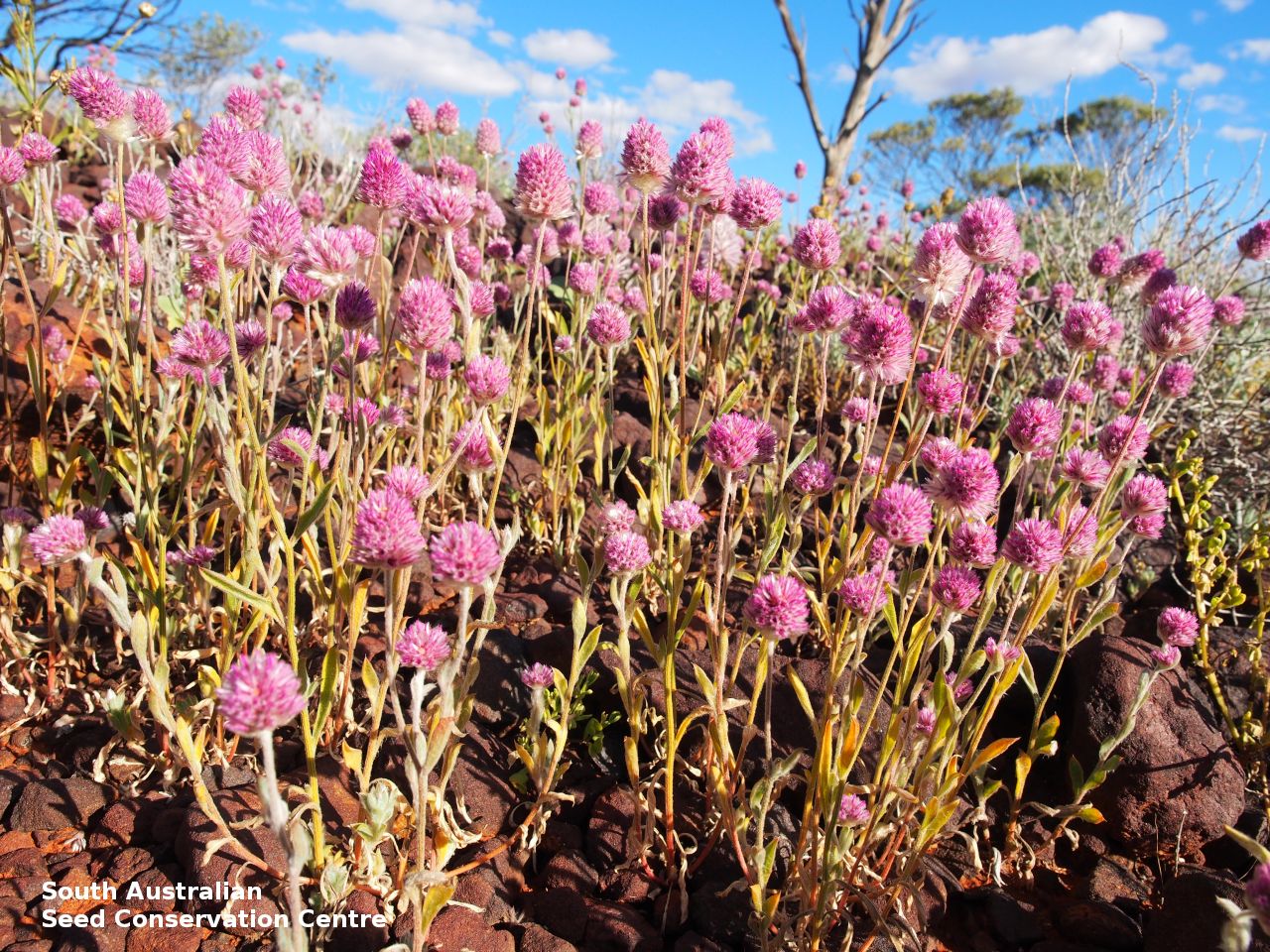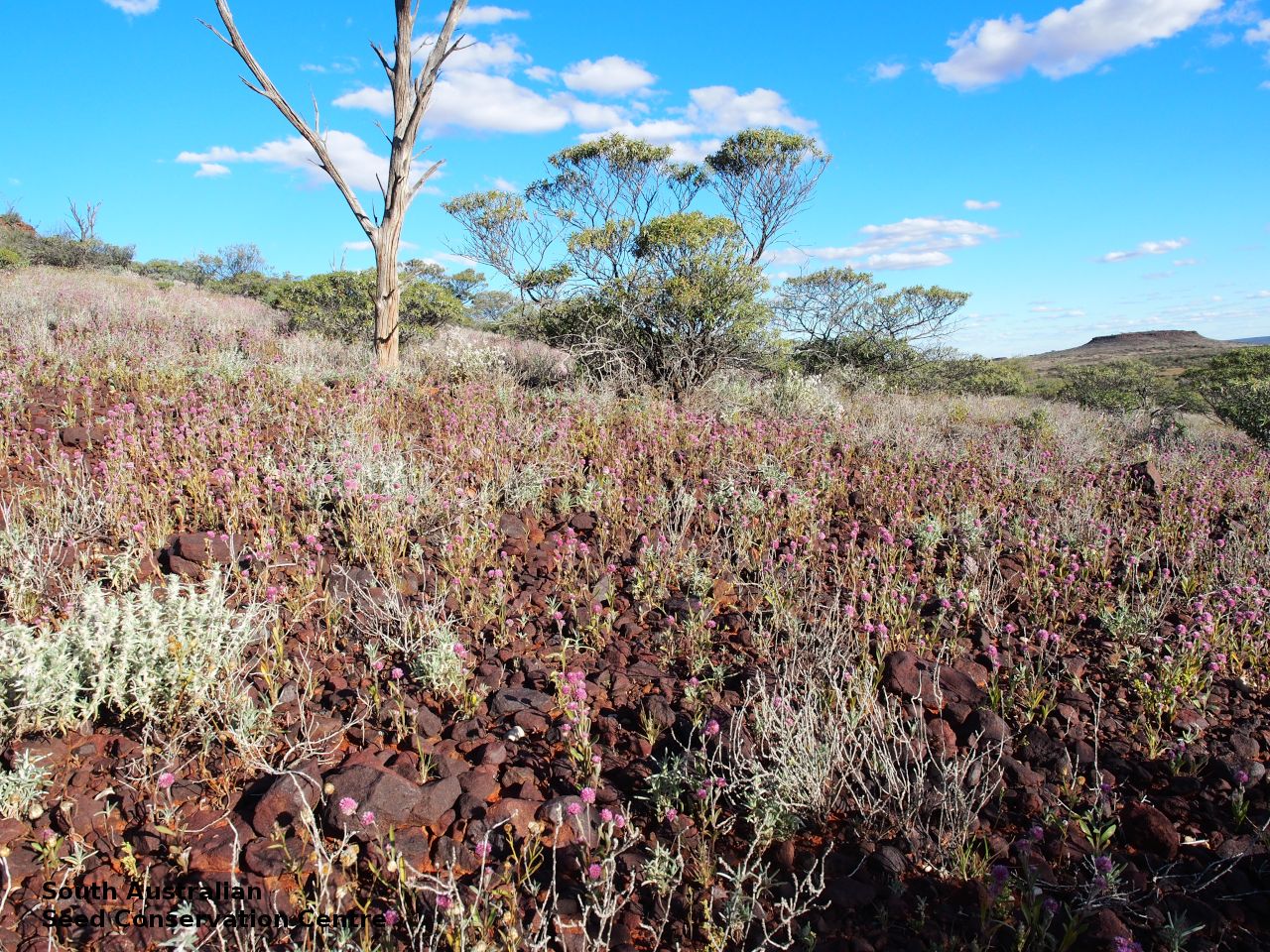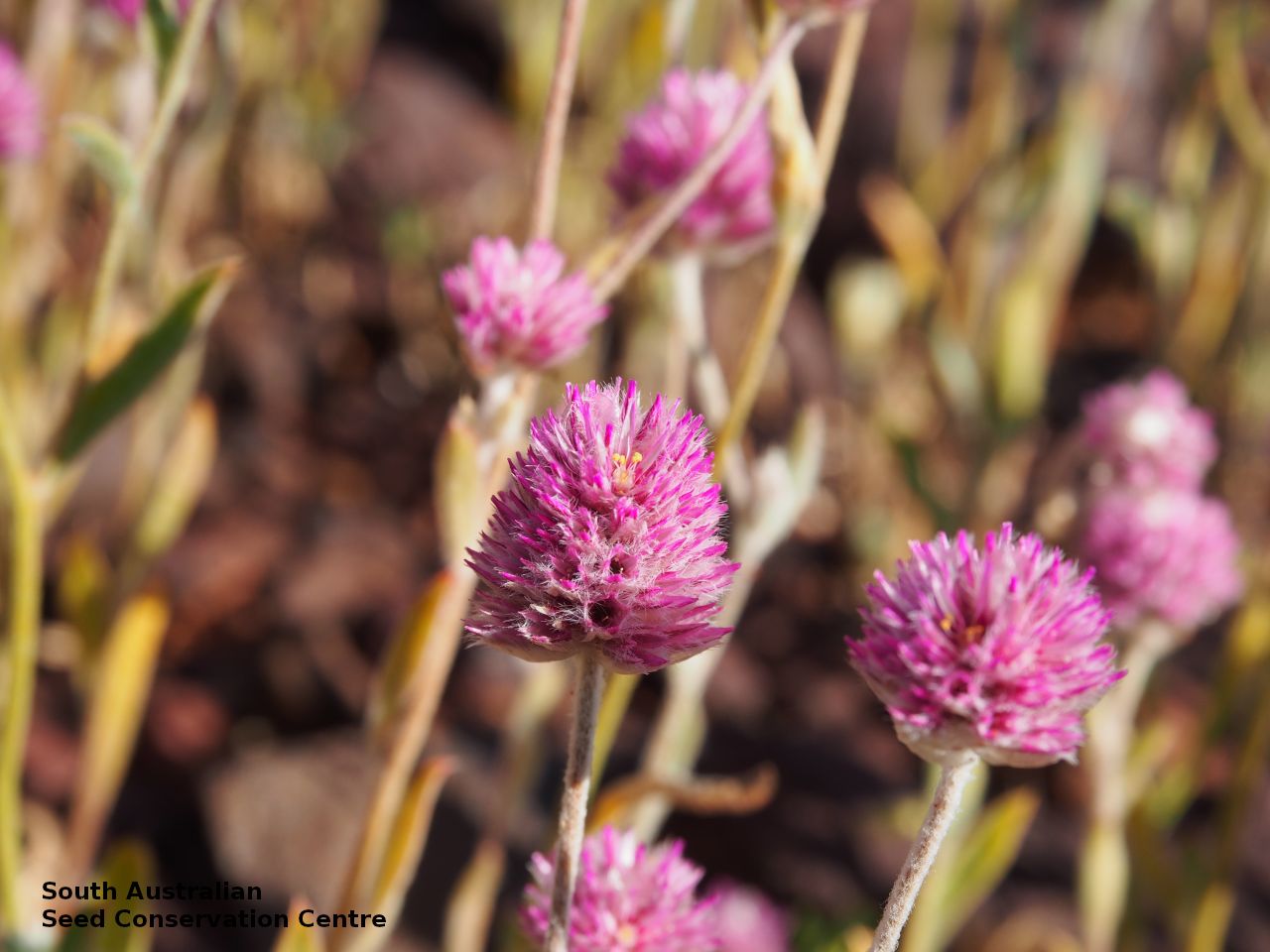














Botanical art
Prior names
Ptilotus helipteroides var. helipteroides
Trichinium helipteroides
Trichinium brachytrichum
Common names
Woolly Tails
Hairy Mulla Mulla
Etymology
Ptilotus from the Greek 'ptilotos' meaning feathered or winged; referring to the hairy flowers. Helipteroides means resembling the genus Helipterum.
Distribution and status
Found in the northern part of South Australia, growing in grasslands, herblands or mulga open woodland on hills or plains, with red gravelly soils. Also found in Western Australia, Northern Territory and Queensland. Native. Common in South Australia. Uncommon in Queensland. Common in the other states.
Herbarium regions: North Western, Lake Eyre
AVH map: SA distribution map (external link)
Plant description
Annual herbs with usually tufted stems often arcuately ascending and sometimes subfastigiately branched, forming clumps of up to 1.5 m diameter. Leaves narrow, linear-lanceolate, mid-green with copious silver-grey hairs as on the shoots especially when young. Flower-spikes large ovoid iridescent, lilac-purple to mauve and pinkish-red head. Fruits are pinkish ovoid head containing numerous long papery and hairy fruits, each containing one seed. Seeds are yellow-orange, reniform to 1.5 mm long and 1 mm wide. Seed embryo type is peripheral.
Seed collection and propagation
Collect seeds between October and November. Be very careful when collecting this species as the fruits contain fine hairs that may cause an allergic reaction for some people. Collect the fruit heads when dried to a pale straw colour. Each fruit should come off the head easily when fingers are rubbed up the stem. Collect more fruits than required as not all fruits will have a viable seed. Be very careful when cleaning this species as the fruits contain fine hairs that may cause an allergic reaction for some people. To clean, rub the fruit heads gently to dislodge the seed at the base of each fruit. Use a sieve to separate the unwanted material. Store the seeds with a desiccant such as dried silica beads or dry rice, in an air tight container in a cool and dry place. Seed viability is usually high but seed availability tend to be low. Seeds are non-dormant, viable seed should germinate readily.
| Location | No. of seeds (weight grams) | Number of plants | Date collected | Collection number Collection location | Date stored | % Viability | Storage temperature |
|---|---|---|---|---|---|---|---|
| BGA | 580 (0.435 g) | 100+ | 30-Aug-2016 | JRG397 North Western | 1-Nov-2017 | 100% | -18°C |
Number of plants: This is the number of plants from which the seeds were collected.
Collection location: The Herbarium of South Australia's region name.
% Viability: Percentage of filled healthy seeds determined by a cut test or x-ray.